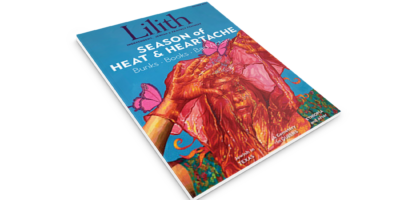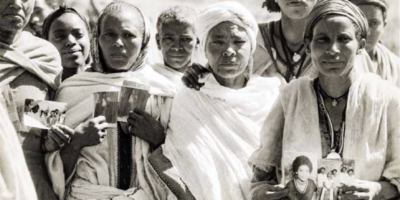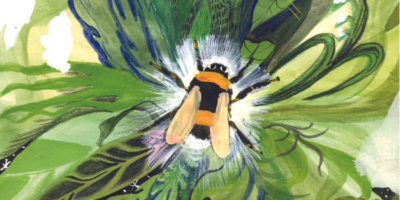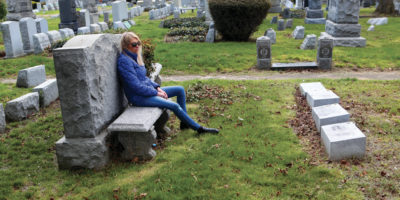
Savor-ing Sephardic Culture
It could have been a cooking class at any culinary school around the world. Ten aproned people at well-equipped work stations around a large room. Ingredients, utensils and bowls lined up in front, and pots on the burners at their backs. Overhead video screens ready to capture the instructor’s actions.
But this class at a top cooking school in Istanbul was unusual. It was all about Sephardic food, a long-neglected category, and Turkish chef Sibel Pinto and I were about to teach.
The class was just one of many special experiences on the 12-day cruise and land tour I organize with Ladino singer/ songwriter Sarah Aroeste, part of the first travel adventure of our new project, Savor: A Sephardic Music & Food Experience. In addition to my two cooking classes, there were music workshops with Sarah, tours of Jewish and non-Jewish sites at stops in Greece and Turkey, gatherings with Jewish communities in Athens and Istanbul, a shipboard Shabbat and Havdalah in Ladino, Hebrew, and English—and all with a sense of exploration and friendship. It was everything we hoped and planned for—a hands-on, multi-sensory and joyful experience of Sephardic culture and history.
This is why Sarah and I created Savor, accent on the second syllable, Savor means “taste” or “flavor” in Ladino and Spanish. Through this project, we are doing something new and different: creating opportunities for people to taste and experience with all their senses the beautiful, deeply intertwined Sephardic touchstones of music and food, which are at the heart of Sephardic tradition and culture. We also highlight Jewish diversity and help build community—among Sephardim, the larger Jewish community and the world around us.
Our story is partially a pandemic story. In January 2022, as Covid lingered, Sarah telephoned me with an idea. She and I had met a few years earlier at a Shabbat dinner and connected quickly. Among other rea- sons, we each had a grandparent from the Macedonian town of Monastir, now called Bitola, that was part of the Ottoman Empire and home for centuries to thousands of Jews until the population of over 3,000 were deported and died in Treblinka.
Sarah told me she was at work on her eighth album, to be called Savor, a collection of ten songs in Ladino centered around food. During the pandemic, she had begun researching songs to go with Sephardic food she was cooking from family recipes. She discovered, as she says, a plethora of Ladino songs about food, each offering a unique glimpse of Ottoman Jewish life. What did I think we could create on the food side to pair with the music on her new album? I had spent much of the pandemic on Zoom, including with Lilith, cooking and teaching Sephardic food and history. I was intrigued and challenged by what Sarah asked.
We began working intensely over the next several months, Sarah in western Massachusetts and me in Washington, DC. As we brainstormed, researched and planned, it became even clearer that Sarah and I share Sephardic souls, passionately linked to our heritage, and driven to preserve and share it with as many people as possible.
Sarah and I took the challenges of starting an independent, non-profit organization step by step, working quickly to develop our ideas with a budget and fundraising plan. We invited eight other women chefs to each contribute a recipe and a companion cooking video, to pair with one of the songs on the album. The songs are organized like a menu of mezé (appetizers), plato principales (main course) or dulse (dessert). Each is about an iconic food item, such as grape leaves or burekas, or a specific ingredient such as the beloved eggplant. Some songs relate to historic events like the great fire of Thessaloniki, while others are about the challenges of romance.
Why all women chefs? As I’ve written before for Lilith, it was women who for centuries created Jewish homes in Iberia, even cooking foods that, by being identified as Jewish, sometimes led to their deaths at the hands of the Inquisition. As the Jews were expelled from their home- land in the 15th century, women carried with them their traditional recipes and songs, passing them on to daughters and granddaughters, nieces and neighbors as they cooked and sang while creating homes in new lands.
The chefs come from varied backgrounds and live scattered across the US and also in England and France.
Sibel, the cooking class chef, grew up in Istanbul with a grandfather from the same nearby Turkish town as my grandfather.
The entwined touchstones of music and food are at the heart of Sephardic tradition and culture.
ennifer Abadi is of Syrian heritage while Viviane Bowell grew up in Egypt in a family with Spanish, Turkish and Syrian roots. The Sephardic Spice Girls duo Rachel Emquies Sheff and Sharon Gomperts carry on family food traditions from Morocco, Iraq and Rhodes. Marcia Weingarten cooks with her mother Kaye Israel in the traditions of Rhodes. They, like Sarah who cooks with her two young daughters on her video, demonstrate passing traditions from mother to daughter.
Two Savor chefs, Hélène Jawhara Piñer, originally from Spain, and Genie Milgrom, who grew up in Cuba, are descended from Crypto-Jewish families. And one chef, Leah Koenig, though not Sephardic, works like all the Savor chefs to help preserve and promote Sephardic culture and history.
Several chefs were influenced by special women in their lives. Sarah remembers her great-aunts in the kitchen singing and laughing as they cooked for family gatherings. Genie tracked down recipes from her 15 female ancestors while researching her Crypto-Jewish heritage. In graduate school, Hélène finally under- stood why her beloved grandmother Ana ate pork, but also changed sheets and lit candles on Fridays.
After presenting several virtual programs of music and food together since beginning Savor, Sarah and I began in-person programs this past January at a synagogue in White Plains, NY. Over 100 people sang and cooked with us as we shared Sephardic history, culture and stories. This is the kind of experience we are working to bring to groups and organizations from synagogues and churches to community centers, schools and universities. We already have plans for several programs around the country in the coming months and are at work planning two travel adventures for 2024. As we expand our programming, we look forward to including more Savor chefs as well as other chefs and musicians.
Sephardic food and the Ladino language are experiencing something of a renaissance at this time. More and more there is no longer the assumption that all Jewish food is Ashkenazic. We are proud that Savor is part of this revival. The best measure of success for Sarah and me is when people participate in a Savor experience, enjoy and learn from it, and then incorporate something of Sephardic culture and traditions into their Shabbat, holiday and family celebrations or everyday life. This will help keep alive and pass on Sephardic history, culture and traditions to future generations.
Susan Barocas is a writer and chef who enjoys leading cooking classes for Lilith readers, Savor followers and many others. Please visit the Savor website to purchase the unique downloadable package of songs, recipes and cooking videos or to sign up for the Savor newsletter with information about upcoming programs and trips. On Instagram, follow @susanbarocas, @saraharoeste, @savorexperience.
Sopa de Ojo (Garlic Soup)
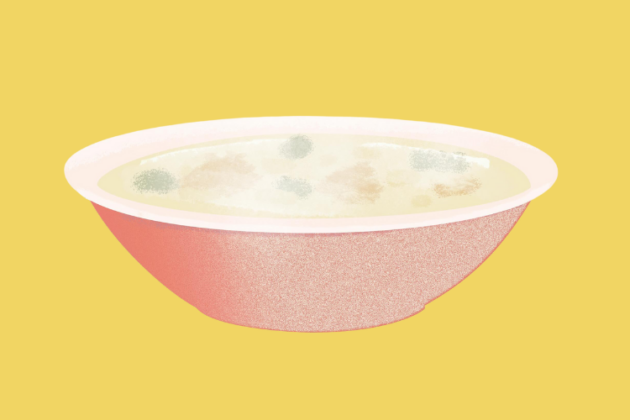
Chicken soup has a long Sephardic history. In the 12th century, Maimonides was prescribing it for good health and for post-partum women. In the 15th century, garlic (ajo) was one of the ingredients that betrayed the Jews to the Inquisition. It is still a staple in Sephardic cooking, used abundantly to create a rich, satisfying flavor in this chicken soup.
Makes 8-10 servings
3 medium leeks (about 1 1/2 pounds)
Cloves from 3 heads of garlic (25–30 total), thinly sliced lengthwise 12 ounces (about 6 cups loosely packed) cleaned fresh spinach baby spinach or white-stemmed chard
6 tablespoons olive oil, divided
12 cups chicken or vegetable broth, homemade or store-bought
3 bay leaves
1/2 cup uncooked long-grain white rice
Salt and pepper to taste
Lemon wedges, for serving
Trim off the root end and remove 1 or 2 tough outer layers of each leek. Cut off just the darkest green top parts, remove the lighter green inside each top, and slice it and the rest of each leek crosswise into 1/4-inch rings. (Wash the trimmed parts and save for soup stock.) Place the sliced leek in a colander or strainer and wash under cold water, using your hands to separate the rings and stirring to get all the dirt off. If the leeks are particularly gritty, set the colander in a bowl of cool water for a few minutes, pull it out without stirring up the water and rinse again. Shake off water and set aside to drain well. Set aside 1 generous cup of the clean, sliced leeks and (separately) 2 tablespoons of sliced garlic.
Cut thick stems off the spinach or chard and dice small. Roughly chop larger leaves into about 2-inch pieces.
In a large, heavy-bottomed soup pot, heat 2 tablespoons of the olive oil over medium heat. Add the remaining leeks to the pot, being careful to avoid any splatters (from water still clinging to them). Turn the heat down to medium-low and sauté the leeks until just softened without browning, 12 to 15 minutes, stirring occasion- ally. Add the remaining sliced garlic and cook until fragrant and softened, 3 to 4 minutes, stirring often so neither the garlic nor the leeks brown.
Add the broth and bay leaves. Turn the heat to medium-high and bring to a boil. When the soup is boiling, stir in the rice. (The residue starch on the grains will help to thicken the soup.) Bring the soup back to a boil, then turn the heat down to a simmer and cover. Let simmer for 20 to 25 minutes, stirring occasionally, until the rice is soft and the flavors have blended.
While the soup simmers, heat the remaining 4 tablespoons of oil in a sauté pan over medium heat. Add the reserved cup of leeks and cook until just starting to turn crispy and golden, about 10 minutes, then add the reserved sliced garlic. Cook for about 5 or 6 minutes, stirring often until garlic is golden brown. Take the pan off the heat a little before the leeks or garlic become dark golden as they will continue to darken in the hot oil. Set the pan aside.
Remove the bay leaves from the soup, then stir in the chopped spinach or chard and diced stems. Bring the soup back to a sim- mer over medium heat and let cook just until the greens are soft, 8 to 10 minutes for spinach or 15 to 18 minutes for chard. Taste, and add salt and pepper as desired. To serve, garnish each portion of soup with the crispy leeks and garlic, plus a drizzle of oil from the saute pan and a wedge of lemon for each person to squeeze into their bowls.

